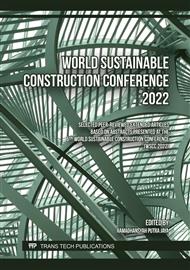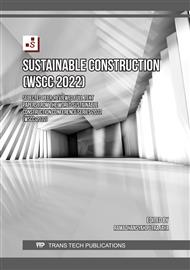p.3
p.25
p.35
p.47
p.57
p.69
p.81
p.91
Aerated Lightweight Concrete Drain with Reinforced Semantan Bamboo (AeLiConD-RSB)
Abstract:
Aggregates are one of the main components of concrete that contribute to its strength. Since the production of concrete demands the extensive use of natural stone materials, the rapid growth of the construction industry has resulted in a high demand for natural aggregate. Bamboo is a material with a large population and the potential to be used in construction due to its durability, flexibility, and strength performance. Moreover, aerated concrete (AC) does not contain coarse aggregate and has various advantages over conventional concrete, such as lower density and acceptable strength. Hence, bamboo strips in aerated lightweight concrete, are used as the reinforcement replacement material to reduce construction material costs and pollution while also improving the quality of the concrete. The objective in this study is to produce an aerated lightweight concrete drain with the treated semantan bamboo strips as reinforcement material. The experimental work consists of casting and testing of 6 non-autoclaved aerated concrete (NAAC) specimens with measurement 150mm x 150mm x 65mm with the design of 2 layers of bamboo-strip-mat; 3 strips and 4 strips horizontally and vertically (3x3 and 4x4) and also, without containing any bamboo-strip-mat. Then, compressive strength and rebound hammer test were conducted to identify the strength of concrete structure. This study proves the semantan bamboo strips that have been treated and coated were effective approaches to increase its strength and also to improve its bond strength with the aerated concrete as reinforcement materials. Thus, the completion of this study may attract the interest of contractors, product manufacturers and construction companies to be used as the new innovation in the construction industry.
Info:
Periodical:
Pages:
3-23
Citation:
Online since:
March 2023
Price:
Сopyright:
© 2023 Trans Tech Publications Ltd. All Rights Reserved
Share:
Citation:



